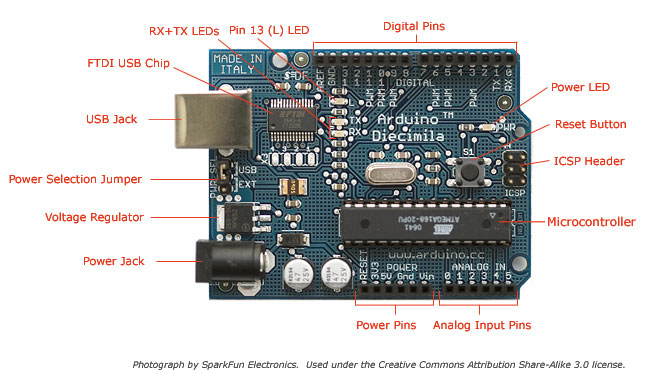 |
| Arduino board |
So if I actually dump that status to the LCD, then I should be getting (hopefully) the start up screen on the display.
The Arduino thing is a bit annoying. The 'IDE' is nice and easy if you just want a few simple bits, but try anything complicated and it just falls apart. The only way I can figure out to cross compile without abandoning it altogether is to #include the C files with a full path name (presumably because it copies source somewhere else - gawd knows). If you put the C files in the directory it compiles them, but bizarrely doesn't link them in. The Arduino is a great bit of hardware, and so is avr-gcc and avrdude, but the Arduino toolkit outside that is messy.
(One of the things I hate about the Mac is that there isn't a bl**dy key with a hash on it on the standard keyboard. So typing in #include or whatever means you have to press ALT 3. It's really annoying. The big keyboard has one but isn't wireless......)
The implementation is going to be pretty basic. I hacked the emulator so it dumped an include file line creating the ROM image in Arduino ROM if you precede the file name with an 'at'. That then is included into the source code which is compiled and uploaded.




